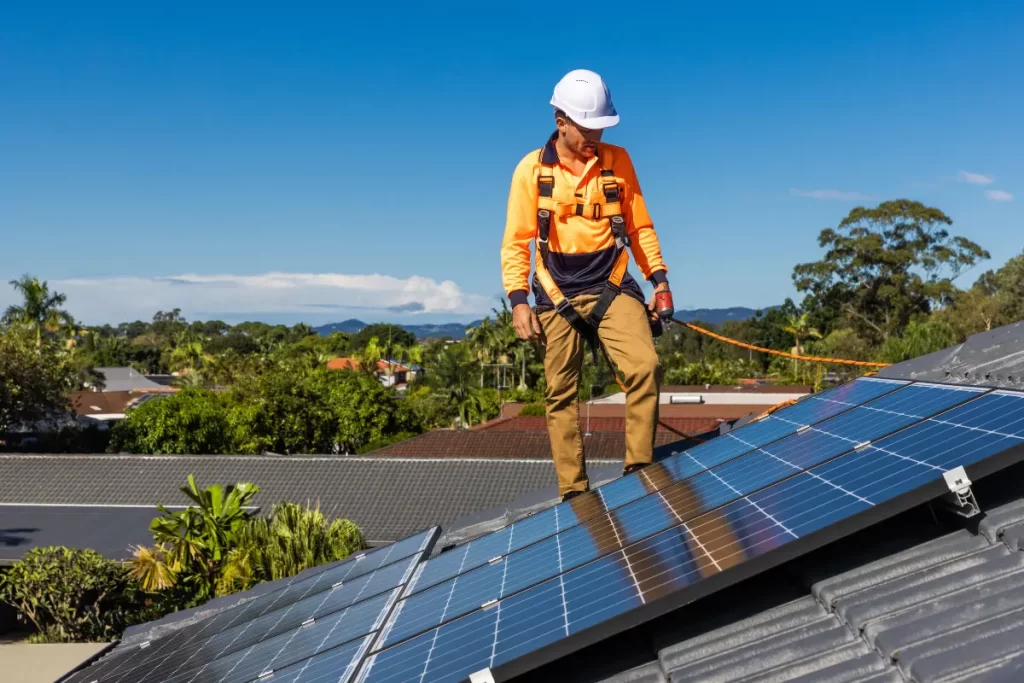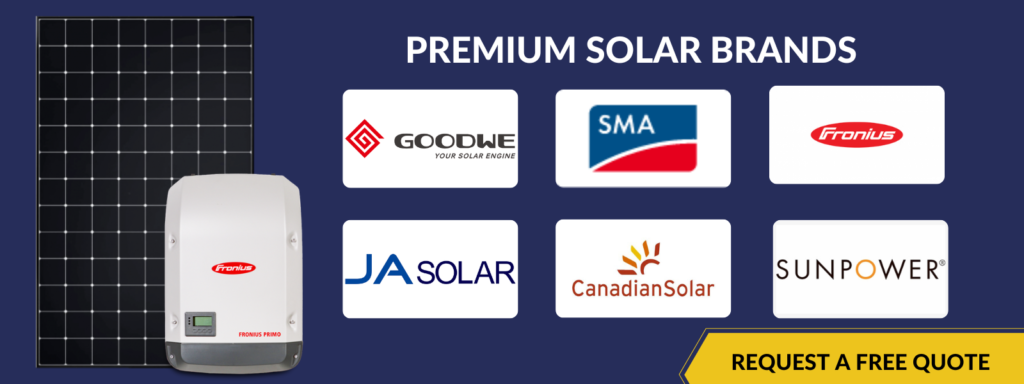Understanding the Costs of a 6.6kW Solar System with Battery: A Comprehensive Guide
Introduction: Embrace the future of sustainable energy with a 6.6kW solar system and battery. As the demand for clean power rises, understanding the components, benefits, and costs of this eco-friendly solution is crucial. Explore the potential for energy independence, reduced bills, and environmental impact in this comprehensive guide to a greener, more efficient lifestyle.
Brief overview of the increasing popularity of solar energy
In recent years, solar energy has surged in popularity as a clean and sustainable power source. With growing environmental consciousness and technological advancements, solar solutions like the 6.6kW system with a battery have become key players in reducing carbon footprints and meeting energy needs.
Introduction to the 6.6kW solar system with battery as a comprehensive solution
Introducing the 6.6kW solar system with battery, a comprehensive energy solution at the forefront of sustainable living. This innovative combination of solar panels and storage technology empowers users with energy independence, reduced bills, and a significant step toward environmental responsibility. Explore the holistic advantages of this cutting-edge solution.
Purpose of the article – exploring components, benefits, and costs
This article serves as a detailed exploration of the 6.6kW solar system with battery, unraveling its components, benefits, and costs. By delving into each aspect, readers gain a comprehensive understanding of this eco-friendly energy solution, enabling informed decisions and fostering a deeper appreciation for the technology’s multifaceted impact.
Components of a 6.6kW Solar System with Battery
Comprising solar panels, the heart of the system, a 6.6kW solar setup includes approximately 16 panels, each with 415 watts capacity. An inverter transforms generated DC into usable AC, and a battery storage system stores excess energy. Secure mounting and racking solutions complete the components, optimizing the system’s efficiency.

A. Solar Panels
Solar panels are the cornerstone of a 6.6kW solar system, typically consisting of 16 panels with capacities ranging from 415 watts each. Harnessing the photovoltaic effect, these panels convert sunlight into electricity, providing a clean and renewable energy source that is fundamental to the system’s efficiency and overall sustainability.
- Number of panels and their wattage
A 6.6kW solar system usually integrates 16 solar panels, each with a wattage ranging from 415 watts. This configuration ensures an optimal balance between the number of panels and their individual capacities, maximizing energy generation and efficiency in converting sunlight into electricity for sustainable power consumption.
- Conversion of sunlight into electricity through photovoltaic effect
The photovoltaic effect is the key process in a 6.6kW solar system, enabling the conversion of sunlight into electricity. Solar panels, through semiconductor materials, generate an electric current when exposed to sunlight. This efficient process ensures the harnessing of clean and renewable energy, powering homes and businesses sustainably.

B. Inverter
The inverter is pivotal in a 6.6kW solar system, transforming direct current (DC) generated by solar panels into usable alternating current (AC). This crucial device ensures compatibility with household or business electrical systems, facilitating efficient energy utilization and contributing to the overall effectiveness of the solar energy conversion process.
- Conversion of DC to AC for household or business use
The inverter in a 6.6kW solar system plays a vital role by converting direct current (DC) generated by solar panels into the alternating current (AC) required for household or business use. This seamless transformation ensures that the solar energy harvested is compatible with electrical systems, powering homes and businesses efficiently.
- Importance of a high-quality inverter for efficiency
A high-quality inverter is paramount in a 6.6kW solar system, ensuring optimal efficiency in converting DC to AC. Its reliability minimizes energy losses, enhances system performance, and extends the lifespan of the entire setup. Choosing a top-tier inverter is essential for maximizing the benefits of solar energy and long-term sustainability.
C. Battery Storage

Battery storage is a crucial component in a 6.6kW solar system, enabling the storage of excess energy generated during peak sunlight hours. This stored energy can be utilized during periods of low sunlight or high energy demand, ensuring a continuous and reliable power supply. Popular choices include efficient lithium-ion batteries for longevity and reliability.
- Role of batteries in storing excess energy
Batteries in a 6.6kW solar system play a pivotal role in storing excess energy generated during peak sunlight. This stored energy provides a consistent power supply during low-sunlight periods, contributing to energy independence and reducing reliance on the grid. Efficient energy storage ensures a sustainable and reliable power source for households or businesses.
- Popular choices like lithium-ion batteries
Lithium-ion batteries are popular choices for the 6.6kW solar system due to their efficiency and longevity. These advanced batteries offer high energy density, fast charging capabilities, and a longer lifespan compared to traditional alternatives. Their reliability makes them a preferred option for storing and utilizing excess solar-generated energy effectively.
Benefits of a 6.6kW Solar System with Battery
A 6.6kW solar system with a battery provides numerous benefits. Achieving energy independence, users can store excess energy for use during low sunlight periods, reducing dependence on the grid and lowering monthly bills. Additionally, the environmental impact is positive, contributing to reduced greenhouse gas emissions and aligning with sustainability goals.
A. Energy Independence
Energy independence is a key benefit of a 6.6kW solar system with a battery. By storing excess energy during sunny periods, users ensure a reliable power supply during low sunlight or grid outages, reducing dependence on external sources. This autonomy fosters resilience and sustainability in the face of changing energy dynamics.
- Storing excess energy for use during low sunlight periods
The capability to store excess energy during peak sunlight hours is a vital feature of a 6.6kW solar system with a battery. This stored energy becomes invaluable during low sunlight periods, ensuring a consistent and reliable power supply. It enhances the system’s resilience, providing uninterrupted energy access regardless of varying sunlight conditions.
- Reducing dependence on the grid
A 6.6kW solar system with a battery significantly reduces dependence on the grid. By storing surplus energy, users can seamlessly draw from their own reserves during peak demand or grid outages, fostering energy self-sufficiency. This minimizes reliance on external sources and contributes to a more resilient and sustainable energy infrastructure.

B. Reduced Electricity Bills
Embracing a 6.6kW solar system with a battery translates to reduced electricity bills. By harnessing solar power, users slash monthly bills, and surplus energy can often be sold back to the grid through net metering programs, further offsetting costs. It’s a practical and cost-effective approach to sustainable energy consumption.
- Lowering monthly bills through solar energy usage
Harnessing solar energy with a 6.6kW system substantially lowers monthly bills. By generating power from the sun, users tap into a sustainable and cost-effective energy source, reducing their reliance on traditional grid electricity. This shift towards solar usage contributes to long-term savings and financial efficiency.
- Possibility of selling excess energy back to the grid
The 6.6kW solar system offers the lucrative possibility of selling excess energy back to the grid. Through net metering programs, users can feed surplus electricity into the grid, earning credits or monetary compensation. This not only maximizes the system’s efficiency but also provides a financial incentive for sustainable energy production.
C. Environmental Impact
A 6.6kW solar system with a battery has a positive environmental impact, contributing to reduced greenhouse gas emissions. By harnessing clean, renewable energy, users actively engage in sustainable practices, mitigating their carbon footprint. This eco-friendly approach aligns with environmental conservation efforts and fosters a greener, healthier planet.
- Contribution to reduced greenhouse gas emissions
A 6.6kW solar system with a battery makes a significant contribution to reducing greenhouse gas emissions. By generating clean energy from sunlight, users actively participate in mitigating climate change, lowering carbon footprints, and promoting environmental sustainability. This conscientious choice aligns with global efforts to combat the impact of fossil fuels on the planet.
- Alignment with sustainability goals
Selecting a 6.6kW solar system with a battery aligns seamlessly with sustainability goals. By relying on renewable energy sources, users actively contribute to a cleaner environment, reduced resource depletion, and a more sustainable future. This eco-friendly choice reflects a commitment to responsible energy consumption and environmental stewardship.

Cost Considerations
Factors influencing installation costs include location, roof type, and project complexity. Site-specific variables impact labor and material requirements, affecting the overall installation expenses. Solar panels, inverters, and batteries collectively contribute to the overall expense of a 6.6kW solar system. The cost of high-quality equipment is a crucial factor influencing the system’s efficiency and long-term performance. The importance of investing in top-tier equipment lies in maximizing efficiency, minimizing energy losses, and ensuring the durability of the entire solar energy system.
Conclusion
Recap of the advantages emphasizes the 6.6kW solar system with a battery’s ability to provide energy independence, reduce bills, and positively impact the environment. Emphasis on long-term benefits highlights sustained cost savings and contributions to sustainability, making the solar system an economically and environmentally sound investment. Encouragement for a thorough assessment urges potential adopters to consider factors like location, energy needs, and available incentives before committing to solar energy. Acknowledgment of decreasing costs and increasing viability underscores the positive trend in solar technology, making it an increasingly attractive and competitive option for a wide range of consumers.


